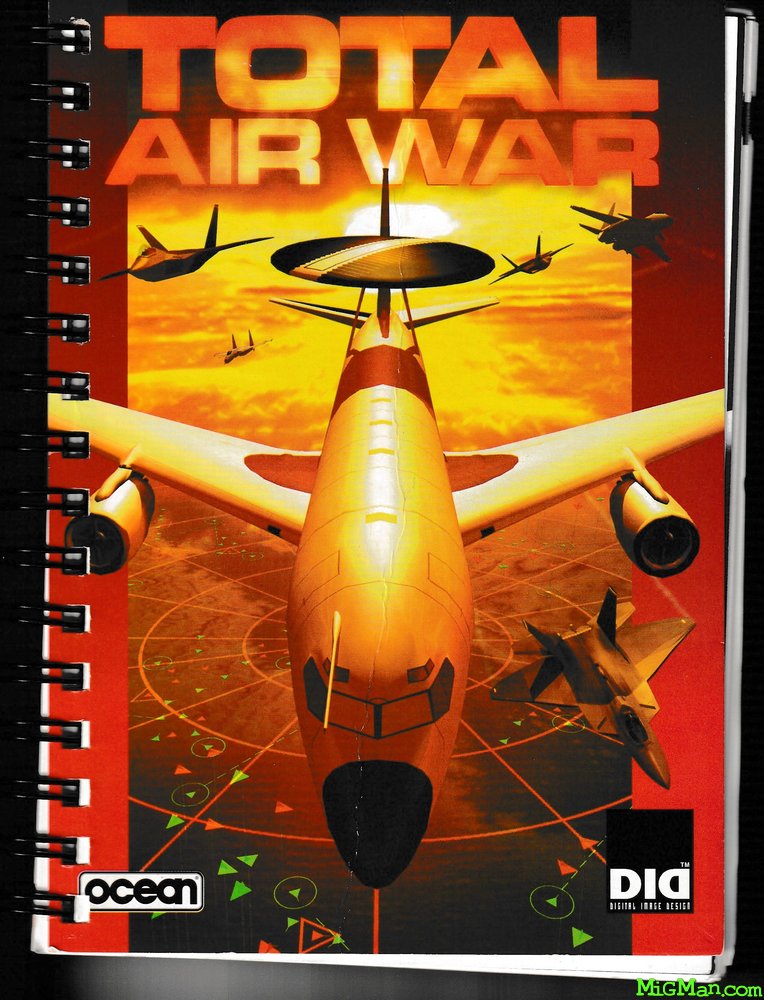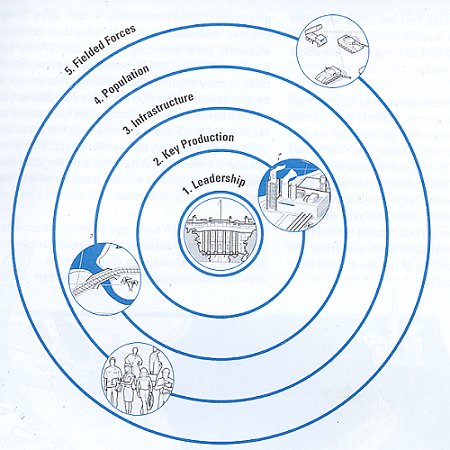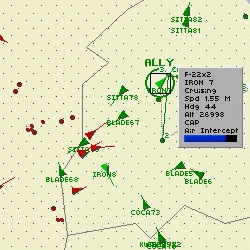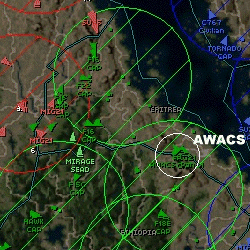
F-22 Total Air War
The Total Air War
By Len "Viking 1" Hjalmarson.
❝





Where F22: ADF came with a manual similar to EF2000, Total Air War sported a spiral bound manual which included more than one hundred pages of detailed information on both allies and adversaries weapons platforms and systems! Clearly, Ocean was getting the message that DiDs followers were SERIOUS simulation gamers. Ocean also offered a rebate to owners of F22: ADF.

The splitting of TFX 3 into two products dulled the anticipation somewhat, but in spite of that the genius of the product was soon obvious. With a relatively light learning curve, Total Air War's appeal was broad in scope. It sported a real-time, fully dynamic campaign system, the third iteration of DiD's WARGEN, and the first campaign to be built on the theories of Col. John Warden, III and the five ring model of strategic warfare.
The TAW manual states that..
The artificial intelligence (AI) portion of the campaign engine uses a strategic assessment process and methodology first adopted by U.S. and coalition forces in the Gulf War.
Known as the "Five Rings" strategic assessment and building process, each adversary is examined, targeted, and struck using a campaign template that identifies "centers of gravity," and the most cost effective way to yield to your will." "Your adversary will be doing the same thing to you. He will react to your moves and send forces to destroy you and your ability to fight. From the war room you can use your intelligence assets to try and get an idea of what it is the enemy is after... if the enemy is able to sustain high sortie rates against you in offensive operations, you may have to shift your effort to more defensive sorties..."

The Five Rings process is derived from the 1990-1991 work of USAF Colonel John A. Warden III and his followers during the build up and execution of the Gulf War. Col. Warden convinced Gulf War commander, Gen. Norman A. Schwarzkopf, of the need to adopt a radically different strategy and warfighting template for his battle with Iraq. Warden's basic premise was that all nation states consist of five concentric rings -or centers of gravity-the innermost ring being leadership, then key production, infrastructure, population, and-finally-fielded military forces.

Prior to the ascendancy of air power, the only way to subdue a nation state was first to engage and then destroy the opponent's fielded military forces. Until that was accomplished, the other centers of gravity (i.e. all other areas vital to the survival, continued functioning, and will of the nation state) would be impossible to reach. With air power, this is no longer the case. All aspects of a nation state are vulnerable to attack and destruction by air power from the onset of hostilities.
Having said that, Warden and others believe that leadership is the real key to success or failure in war. When an enemy's leaders decide they had enough, they sue for peace-or someone takes power away from them. For that reason, every action in war should be geared to affecting the enemy's leadership directly or indirectly. (From DiD's U.S. web site).
The campaign in Total Air War consists of ten different tactical scenarios...
... though you won't be able to access the most difficult ones until you've played the easier ones.
The campaign has some great features, both in terms of ability to monitor progress as well as the guiding intelligence. The capstone is the integration of the Theatre Command and AWACS modes and the ability to play the strategic game. Immersion was greatly enhanced by DiDs smart view system, which was available in real time even in the AWACS interface.
Just how much fun was this sim? Total Air War is currently the oldest simulation resident on my hard drive; I still use it for showing newbies how easy it can be to get into combat sims. The immersion factor in Total Air War was quite high, and the COMMS were the most detailed ever seen at the time. DiD bragged that the virtual vocabulary exceeded 10,000 words.

... yet its learning curve remained relatively light compared to a product like Jane's F/A 18, because the F22 is designed that way. You could exercise a great deal of control while interacting with AWACS, your wingmen, and ATC in a dynamic and continually changing Universe. Pilot records were also nicely managed.
It all came Back to me this past week as I commanded the war from the AWACS interface. Managing the war was addictive, and the reality is that the campaign goes your way more quickly when you manage the war personally. You can command allied flights by simply clicking on a flight and dragging it to a destination.
If you drag to empty space you are simply giving vectors. If you drag to a hostile flight you are ordering an intercept. Dragging a friendly flight to another friendly flight orders escort, dragging to a fueler orders refueling, and dragging to an airbase orders a landing. All this action can keep you quite busy - VBG.

It killed a few bugs and improved D3d support. The game still looks better with 3dfx hardware, however (running under Glide, 3dfx' proprietary API), and is one of the only sims I can think of that has effective software anti-aliasing!.
The patch also added additional game options, such as the ability to start on the runway in any campaign mission, ability to rearm wingmen when you landed, and ability to generate a successful mission no matter at which allied base you ended your mission.
TAW is still great fun and works fine with DX7. In fact, others seem to think so too. I found some active sites dedicated to flying Total Air War. The first is maintained by Geert "Warrior" Vervoort.
The second is at Fightersim.com.
❞